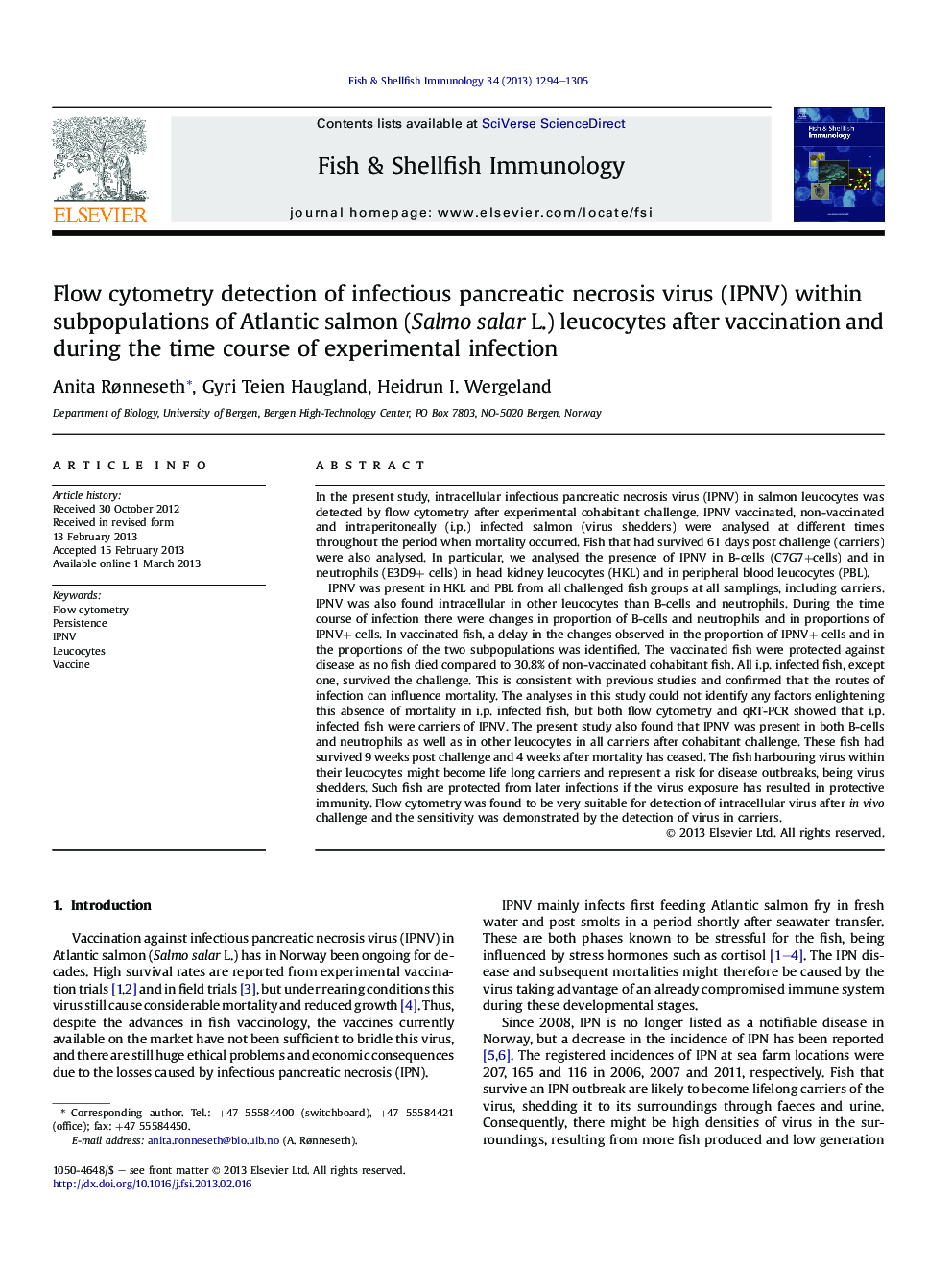| Article ID | Journal | Published Year | Pages | File Type |
|---|---|---|---|---|
| 2431876 | Fish & Shellfish Immunology | 2013 | 12 Pages |
In the present study, intracellular infectious pancreatic necrosis virus (IPNV) in salmon leucocytes was detected by flow cytometry after experimental cohabitant challenge. IPNV vaccinated, non-vaccinated and intraperitoneally (i.p.) infected salmon (virus shedders) were analysed at different times throughout the period when mortality occurred. Fish that had survived 61 days post challenge (carriers) were also analysed. In particular, we analysed the presence of IPNV in B-cells (C7G7+cells) and in neutrophils (E3D9+ cells) in head kidney leucocytes (HKL) and in peripheral blood leucocytes (PBL).IPNV was present in HKL and PBL from all challenged fish groups at all samplings, including carriers. IPNV was also found intracellular in other leucocytes than B-cells and neutrophils. During the time course of infection there were changes in proportion of B-cells and neutrophils and in proportions of IPNV+ cells. In vaccinated fish, a delay in the changes observed in the proportion of IPNV+ cells and in the proportions of the two subpopulations was identified. The vaccinated fish were protected against disease as no fish died compared to 30.8% of non-vaccinated cohabitant fish. All i.p. infected fish, except one, survived the challenge. This is consistent with previous studies and confirmed that the routes of infection can influence mortality. The analyses in this study could not identify any factors enlightening this absence of mortality in i.p. infected fish, but both flow cytometry and qRT-PCR showed that i.p. infected fish were carriers of IPNV. The present study also found that IPNV was present in both B-cells and neutrophils as well as in other leucocytes in all carriers after cohabitant challenge. These fish had survived 9 weeks post challenge and 4 weeks after mortality has ceased. The fish harbouring virus within their leucocytes might become life long carriers and represent a risk for disease outbreaks, being virus shedders. Such fish are protected from later infections if the virus exposure has resulted in protective immunity. Flow cytometry was found to be very suitable for detection of intracellular virus after in vivo challenge and the sensitivity was demonstrated by the detection of virus in carriers.
► Flow cytometry was used for analysis of IPNV within leucocytes. ► IPNV was present in B-cells, neutrophils and other leucocytes after in vivo challenge. ► Survivors (carriers) from experimental challenge harboured virus within leucocytes. ► Vaccinated cohabitans and i.p. infected fish showed high survival.
